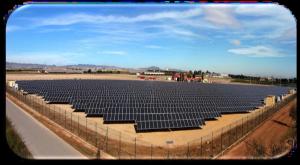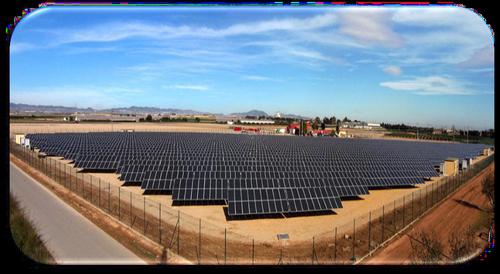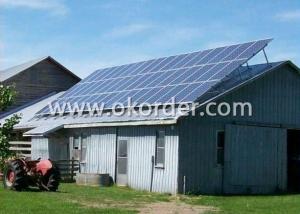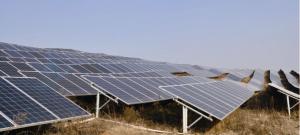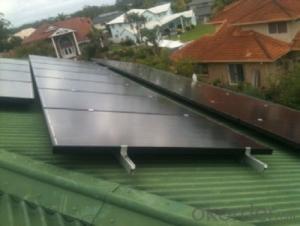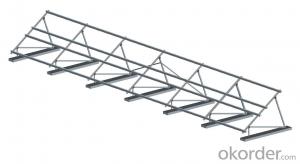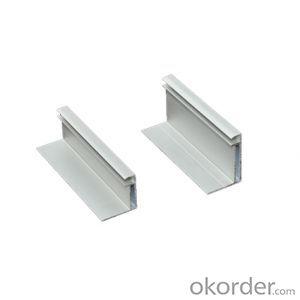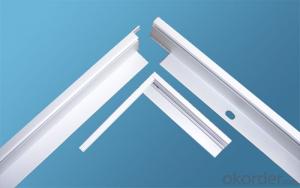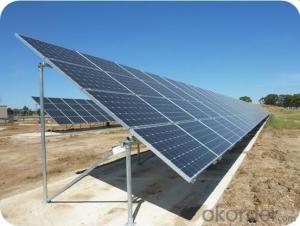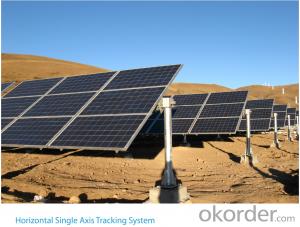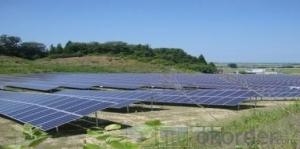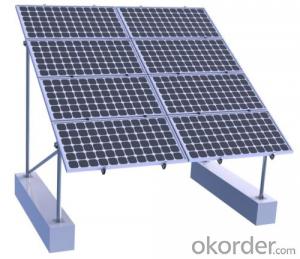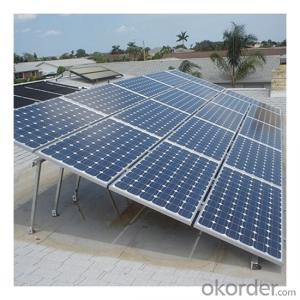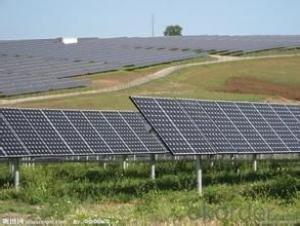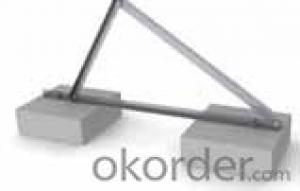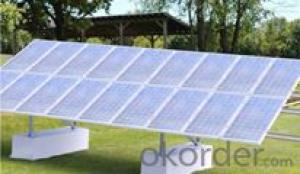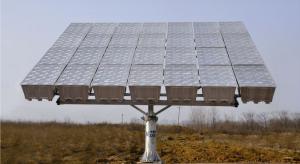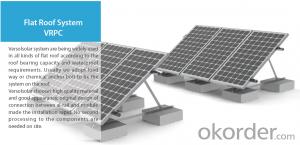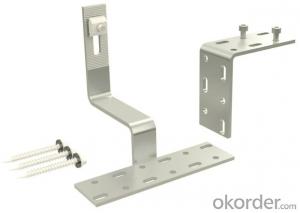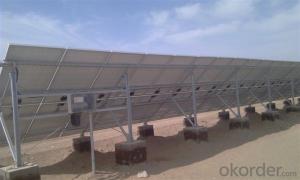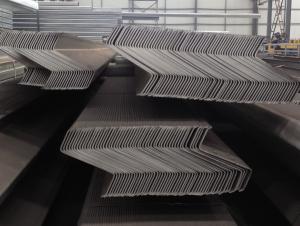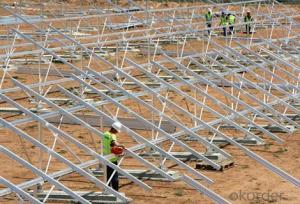Solar Roof Ground Mounting Systems
- Loading Port:
- Shanghai
- Payment Terms:
- TT OR LC
- Min Order Qty:
- -
- Supply Capability:
- 30MW /month
OKorder Service Pledge
OKorder Financial Service
You Might Also Like
40 years of experience in steel andaluminium and in light metal construction
design and light metal structures.
Over 15 years of expertise in Solar Mounting Systems!
Schletter is the biggest supplier of solar mounting systems in Europe
with more than 1200 employees worldwide.
Experience from over 6 GW of mounted systems
Your professionals for planning, advice and production!
System mit Rammfundamentierung
Optimierte projektbezogene Planung
Ausgezeichnete Materialeffizienz, bis ins Detail optimierte Systemanschlüsse
Schnelle Montage durch weitgehende Vorkonfektionierung
Maximaler Vorfertigungsgrad
Extrem kurze Montagezeit
Keine Bodenversiegelung
Lange Lebensdauer durch ideale Werkstoffkombinationen
- Q: Can a solar mounting system be used in areas with limited access to technical support?
- Yes, a solar mounting system can be used in areas with limited access to technical support. Solar mounting systems are designed to be user-friendly and require minimal technical expertise for installation. Additionally, many manufacturers provide detailed installation manuals and online resources to guide users through the installation process. In remote areas, it may be beneficial to consult with local experts or hire technicians for initial installation and training to ensure proper setup and future maintenance. However, once installed, solar mounting systems typically require minimal technical support and can operate efficiently with regular maintenance and cleaning.
- Q: What are the advantages of using a ground-mounted solar system?
- There are several advantages of using a ground-mounted solar system. Firstly, ground-mounted systems can be installed in any location with sufficient space, unlike rooftop systems which require suitable roof space. This flexibility allows for optimal positioning to maximize solar exposure and energy production. Additionally, ground-mounted systems are easier to install and maintain since they don't require climbing onto roofs. They also provide better access for cleaning and maintenance. Moreover, ground-mounted systems can be easily expanded or upgraded if energy needs increase in the future. Finally, ground-mounted systems tend to have better ventilation, resulting in improved heat dissipation and increased efficiency compared to rooftop systems.
- Q: How are solar mounting systems installed on the ground?
- Solar mounting systems are typically installed on the ground by following a few key steps. First, the area where the system will be installed is cleared and leveled to ensure a stable foundation. Next, the mounting posts or racks are securely anchored into the ground using specialized techniques such as helical piles or concrete footings. Once the posts are in place, the rails or frames that hold the solar panels are attached to the posts, ensuring they are properly aligned and secured. Finally, the solar panels themselves are mounted onto the rails or frames, connecting them to the system's electrical components. Overall, careful planning, precise measurements, and proper installation techniques are crucial for ensuring a successful ground-mounted solar system.
- Q: Are there any specific requirements for installing a solar mounting system on a rooftop with chimneys or vents?
- Yes, there are specific requirements for installing a solar mounting system on a rooftop with chimneys or vents. It is important to ensure that the mounting system is designed in a way that avoids obstructing or interfering with the chimneys or vents. The system should be installed in a manner that allows for proper ventilation and maintenance of the chimneys or vents. Additionally, it is crucial to evaluate the structural integrity of the rooftop and ensure that the mounting system is securely attached to withstand any potential wind or seismic loads.
- Q: Can a solar mounting system be used in areas with solar incentives for low-income households?
- Yes, a solar mounting system can be used in areas with solar incentives for low-income households. These systems can help low-income households access clean and affordable energy by reducing their electricity bills and potentially even generating income through net metering or feed-in tariffs. Additionally, solar incentives specifically designed for low-income households, such as grants or tax credits, can further reduce the upfront costs of installing a solar mounting system.
- Q: Can a solar mounting system be used in hurricane-prone areas?
- Yes, a solar mounting system can be used in hurricane-prone areas, but it must be designed and engineered to withstand high winds and extreme weather conditions. Specialized mounting systems are available that are tested and certified to meet specific wind load requirements, ensuring the safety and durability of the solar panels during hurricanes.
- Q: Can a solar mounting system be used in areas with limited access to community solar initiatives?
- Yes, a solar mounting system can be used in areas with limited access to community solar initiatives. While community solar initiatives typically involve shared solar installations that allow multiple participants to benefit from a single solar array, a solar mounting system can be used to install solar panels on individual properties or buildings. This allows individuals or organizations in areas without community solar initiatives to still generate their own solar power and benefit from the advantages of renewable energy.
- Q: How do you secure a solar mounting system to the ground?
- A common method to secure a solar mounting system to the ground is by using concrete footings or ground screws. Concrete footings involve digging holes and pouring concrete to create a stable foundation. Ground screws, on the other hand, are large metal screws that are twisted into the ground to provide a secure attachment point. Both methods ensure the solar mounting system remains firmly anchored to the ground, even in adverse weather conditions.
- Q: Can a solar mounting system be used in areas with limited access to training programs?
- Yes, a solar mounting system can be used in areas with limited access to training programs. While training programs can provide valuable knowledge and skills for installing and maintaining solar systems, there are other resources available to learn about solar mounting systems. Online tutorials, instructional videos, and manuals can provide step-by-step guidance for installation. Additionally, collaborating with experienced professionals or seeking assistance from manufacturers can also help overcome the limitations of access to training programs.
- Q: Are there any specific requirements for installing solar mounting systems in areas with high snowfall?
- Yes, there are specific requirements for installing solar mounting systems in areas with high snowfall. In such areas, it is important to consider the additional weight of snow on the panels and ensure that the mounting system is designed to withstand the added load. The tilt angle of the panels should be optimized to allow snow to slide off easily, reducing the risk of damage and maintaining the system's efficiency. Additionally, the mounting system should be securely anchored to withstand strong winds and prevent snow accumulation beneath the panels. Regular maintenance and snow removal may also be necessary to ensure optimal performance and prevent any potential issues caused by heavy snowfall.
Send your message to us
Solar Roof Ground Mounting Systems
- Loading Port:
- Shanghai
- Payment Terms:
- TT OR LC
- Min Order Qty:
- -
- Supply Capability:
- 30MW /month
OKorder Service Pledge
OKorder Financial Service
Similar products
Hot products
Hot Searches
Related keywords
